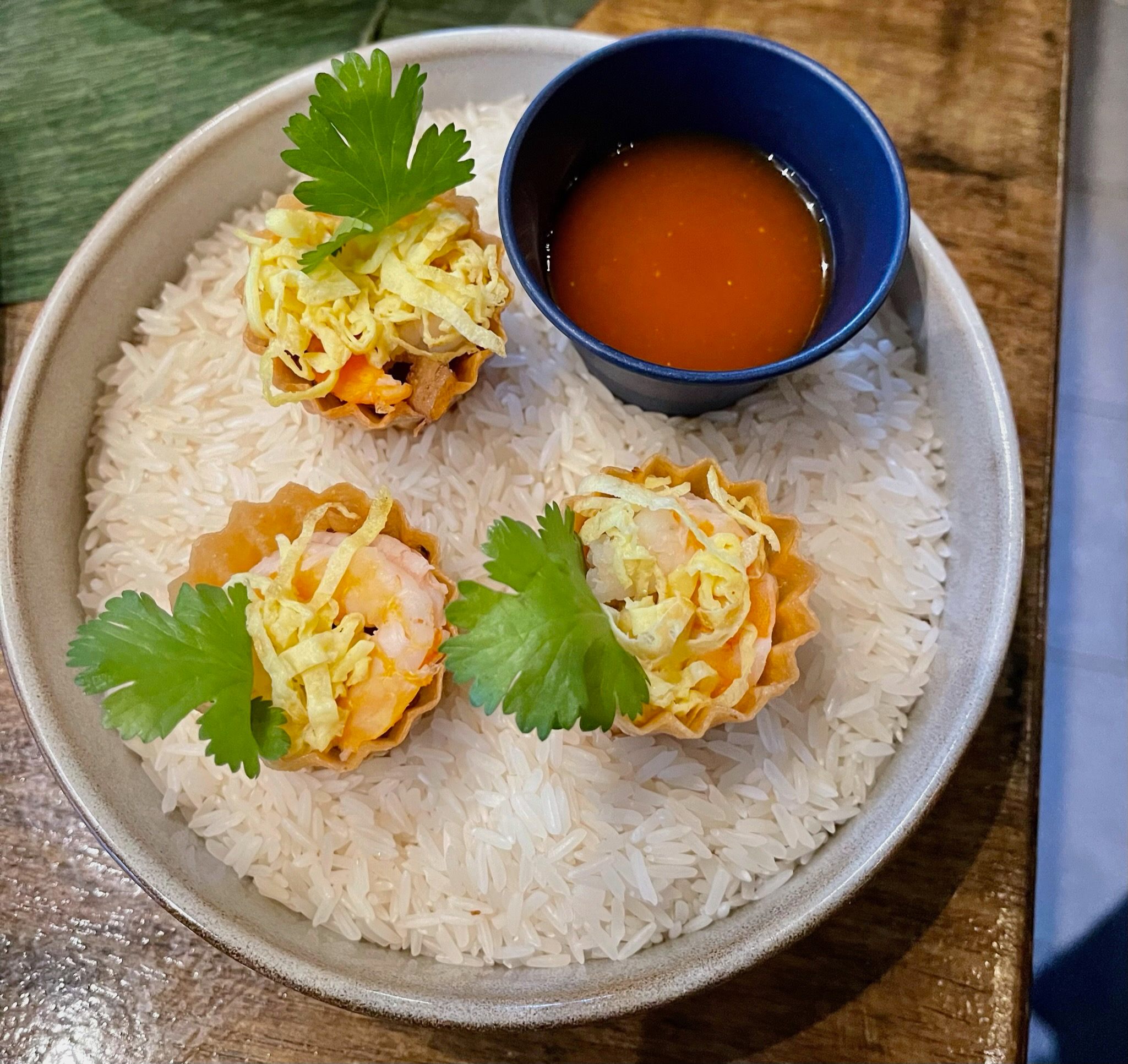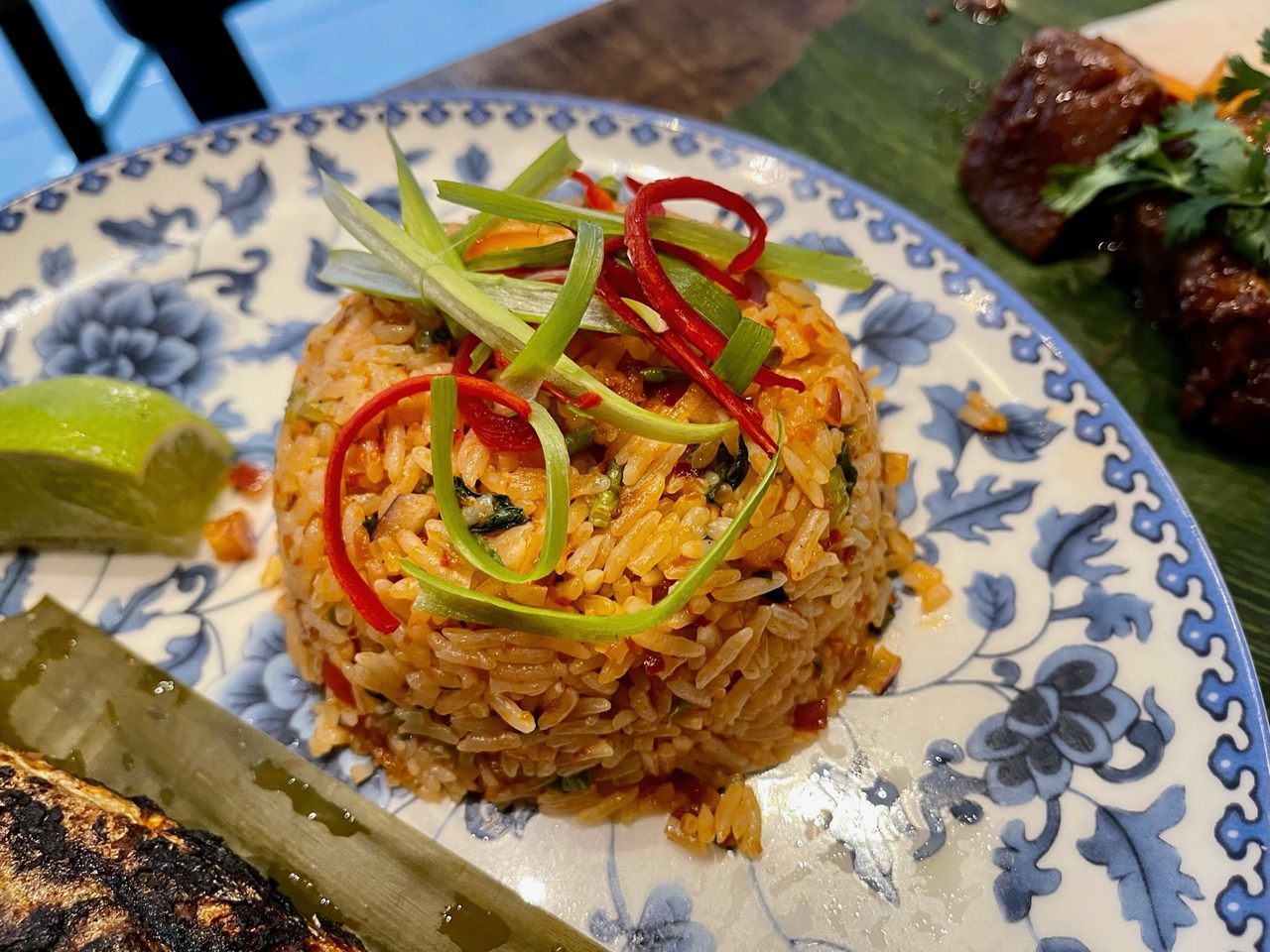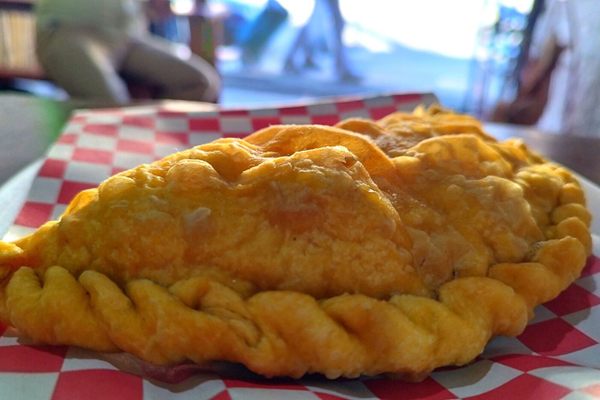A Secretive Food Culture Enters the Spotlight
Peranakan cuisine is a feast of complexity.
THIS ARTICLE IS ADAPTED FROM THE SEPTEMBER 17, 2023 EDITION OF GASTRO OBSCURA’S FAVORITE THINGS NEWSLETTER. YOU CAN SIGN UP HERE.
I knew I had made a mistake almost instantly. It was Christmas, and my mother and I were preparing jiu hoo char, a stir-fried dish of finely shredded jicama, cabbage, dried cuttlefish, and a host of other ingredients. Because everything must be uniformly diced into even-sized pieces, the preparation can take a few hours—which is why I impatiently asked, “Do we have to cut them this way?”
Cue a stern glare and a cultural lesson.
Jiu hoo char is a specialty of the Peranakans, a cultural group that stretches across Malaysia, Singapore, and Indonesia. While not Peranakan herself, my mother inherited her jiu hoo char recipe from my grandmother, who inherited it from my great-grandmother, who in turn learned it from her neighbor, herself a nyonya—a Malay and Indonesian honorific for married women of the Peranakan culture.
Often, the specifics of certain recipes are only shared with those who are part of a Peranakan family by heritage or marriage. How much galangal do you put into aromatic nasi ulam? How long do you steam the pork for a tender babi pongteh? These important details can also be kept from other family members. Margaret Goh, a second-generation Peranakan from Singapore, knows this all too well. “The dishes were so difficult to get recipes for,” she laughs. “My aunt was so coy about her recipes!”
As recently as a decade ago, there were fears that Peranakan cuisine might die out, due to the tradition of recipes passing only from mother to daughter. But now a new generation is stepping up, drawing on the past to forge a new future.
Just off New York City’s Union Square, Kebaya is the first restaurant in the city to focus on Peranakan food. Opened in February 2023, it’s the brainchild of Goh and restaurateur Salil Mehta. Mehta notes that Peranakan dishes such as assam pedas have long been on the menus of Southeast Asian restaurants.
But at Kebaya, Peranakan cuisine is at the forefront. “These are Peranakan dishes that have been on [our] palates for a while,” Mehta tells me. “People just don’t know what Peranakan is.”
Community Cooking

Peranakan culture dates back to the 15th century. Derived from the Malay word anak, meaning child, Peranakan refers to the descendants of the Chinese seafaring traders who landed in Southeast Asia and married local Malay women. Today, pockets of Peranakan culture are scattered across Indonesia, Singapore, and the Malaysian states of Penang and Malacca.
In Peranakan strongholds, you might hear the mix of Hokkien dialect with the Malay language, known as Baba Malay. But nowhere is the intertwining of cultures as strongly reflected than in the food, where Chinese dishes meet Malay spices and cooking techniques. “Chinese, but not quite Chinese. Malay, but not quite Malay,” as Goh puts it.
The nyonya defined Peranakan food as we know it. A key hallmark is how much care goes into each dish’s preparation. Take kuih pai tee, for example, a petite vegetable-and-spice filled pastry. Making the tart shells requires dipping a mold into a thin batter, and then dipping it into a hot vat of oil and removing it at just the right moment. Remove it too soon, and the shell crumples; leave it in too long, and it burns. Mehta says it takes his team about three to four hours to make a few dozen shells.
But in sharp contrast to how secretive they are with recipes, Peranakan cooks don’t make food alone. In fact, the act of cooking Peranakan food has traditionally been a communal affair. “In the olden days,” Goh says, “if there was a festival or if there was a marriage or if there was some celebration, they would all gather together and help to do the cooking and cutting.”
A New Era
That act of sharing—not just cooking, but also eating food together—is perhaps why a new generation of cooks are shifting Peranakan food out of the private sphere. Only a few years ago, the narrative was that this secretive food tradition was dying out. But today, Candlenut, a Singaporean Peranakan restaurant, has a Michelin Star, and several other Peranakan restaurants in Malaysia and Singapore have earned spots in the Michelin Guide.
Both Goh and Mehta believe that Peranakan cuisine is evolving and becoming more flexible. “In this modern world, all the grandaunties think their recipe is the best,” Goh says. “But everyone will have their own way. The basic recipe is there, but the quirks in each recipe—that’s up to you.”
“We need to be a part of mainstream culture and figure out a way to educate people and help them understand,” Mehta says. “Recipes should not be hidden. They should be explained. I think that’s the only and the best way to educate people about your culture.
“If any Peranakan person reads this,” he adds, “all I would tell them is, guys, keep the culture alive. Teach people. What is a better way to educate through food?”
Below are some of the unique building blocks that make up Peranakan food. While you peruse, I think I need to call my mother. It’s probably time I learn how to make a proper jiu hoo char.
Buah Keluak
Buah keluak are the seeds of the Pangium edule tree. When first harvested, they’re extremely toxic. There are a variety of methods to remove the toxins, ranging from soaking the seeds for five days to boiling them then letting them ferment underground, but the cyanide compounds within must be given time to break down before they yield an earthy, slightly bitter taste profile.
Their flavor has been likened to dark chocolate and cacao, which makes them excellent accompaniments for the iconic Peranakan chicken stew ayam buah keluak.
Torch Ginger Flower

Tangy, aromatic torch ginger flowers, known as bunga kantan in Malay, are essential to Peranakan cooking. Native to Thailand, the pink buds often garnish noodle dishes like Penang’s fish broth-based assam laksa.
Daun Kaduk
These heart-shaped, shiny leaves, Piper Sarmentosum, lack an “official” English name, though they’re sometimes known as “wild betel,” or “pepper leaves.” These add a mildly bitter and peppery edge to any dish, and are one of the 18 herbs in nasi ulam.
Gastro Obscura covers the world’s most wondrous food and drink.
Sign up for our email, delivered twice a week.






































Follow us on Twitter to get the latest on the world's hidden wonders.
Like us on Facebook to get the latest on the world's hidden wonders.
Follow us on Twitter Like us on Facebook